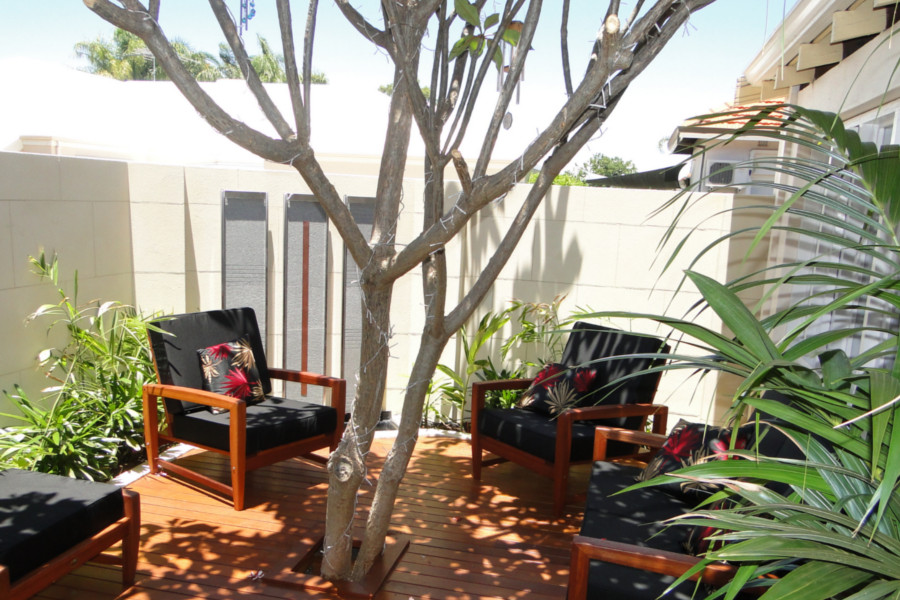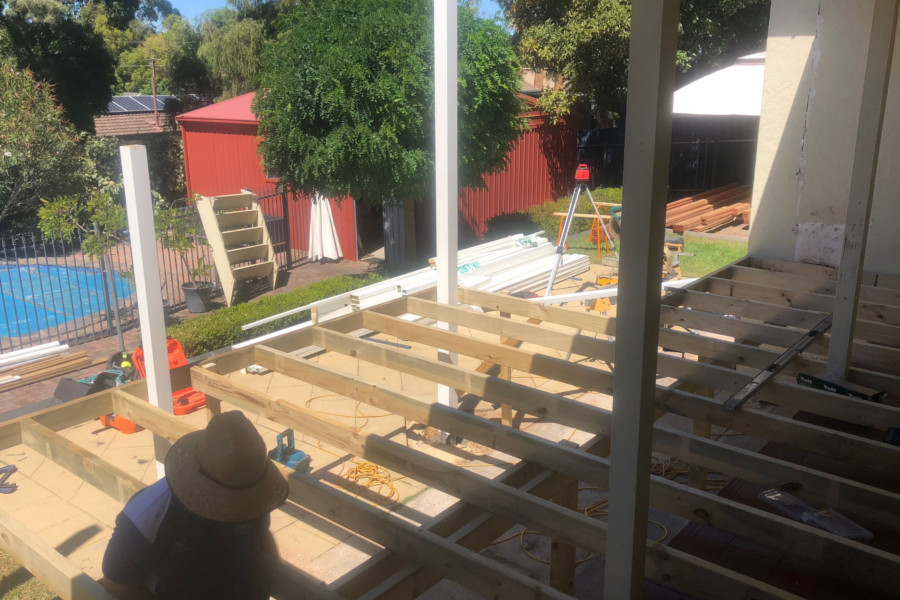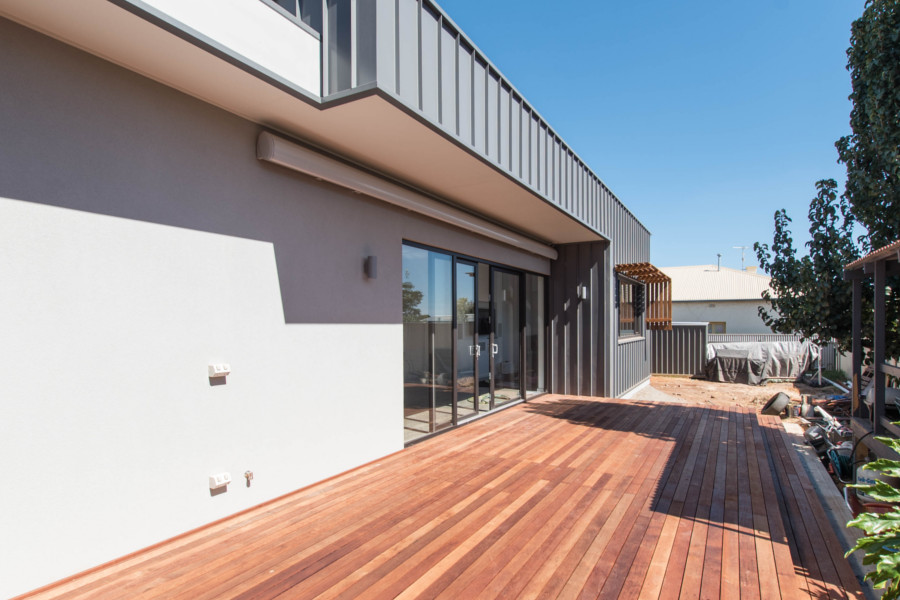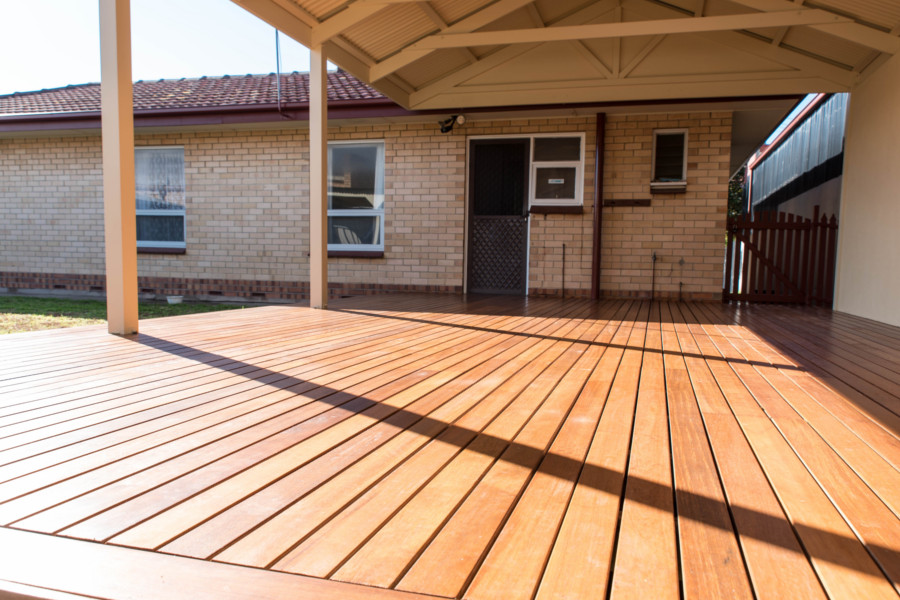
Timber is the building material of the future and here’s why your deck, pergola, patio and other outdoor living extensions should be built with it.
The abundance of building materials is a boon to homeowners like yourself seeking to extend their homes and increase value. These days you can choose from a wide variety of materials that include concrete, aluminium, steel and even various types of plastics and synthetic materials. And of course there is the option to build the outdoor extension using timber.
There are many valid arguments and compelling reasons you may consider alternatives to timber. Concrete is durable and gets even stronger over time. Steel is easy to fabricate and install. Aluminium is light and easy to handle. Synthetics are inexpensive and easy to maintain, and a few are made from recycled material. But for each argument offered by these timber alternatives there are equally compelling and valid counter-arguments to using timber.
Here are some of the best reasons you should build your deck, pergola, patio and other outdoor living extensions from timber.
Timber Is Sustainable
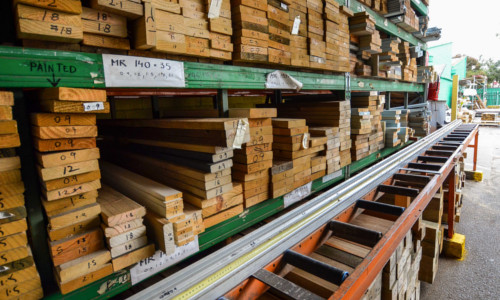
Sustainability is the battle cry of our era. As understanding and awareness of our fragile environment grows we realize more and more that the need to preserve the planet’s resources is of utmost importance. We now better understand and fully accept that every choice we make impacts the world’s ecological balance. This encompasses our choices of our building materials.
And so every option now comes with the assurance of being earth-friendly and sustainable. And it would appear that timber is the least earth-friendly of these because timber is harvested by felling trees — a tree-hugger’s worst nightmare! But before you pass judgement you should consider the fact that of all the building materials available at your disposal timber happens to be among the most sustainable and earth-friendly.
Yes, to get the timber for our decks and pergolas we do have to chop down a few trees; there’s no other way. But of all the materials available, timber is the only one that is renewable. And so for every tree that is cut down at least one new one is planted to take its place. That’s the very essence of sustainability. It helps immensely that Australia has one of the best forest management schemes in the world and as many as three certification programs to ensure that local timber comes only from a certified sustainable forest.
Australia is also a huge importer of timber and wood products from countries whose forestry management programs may not be as stringent as ours, if they exist at all. We here at Softwoods follow country-specific guidelines and processes of the Department of Agriculture to ascertain the imported timbers chain of custody and verify that it does not come from illegal logging.
Timber Is Friendly To The Environment

Sustainable timber production extends beyond merely replacing what we consume. It also requires us to make sure that the production process causes as little damage to the surrounding environment as possible. Here again timber trumps its rivals.
When you select the material for your outdoor extension project, you are seeing the end-product of what is usually a complex, energy-intensive process. Steel, aluminium and concrete all need to be mined and require enormous amounts of labour and energy to pull the raw materials from the earth. And then more energy still is required to process these raw materials into the finished products you and I purchase to build our structures.
Timber, for starters, is totally renewable; managed forests attest to that. Trees grow above ground and are more easily harvested compared to steel and concrete, which need to be mined from under the earth. Processing cut trees into timber is also a relatively easier process than, say, extracting iron ore from rocks. The complexity of the mining process is ultimately accompanied by various environmental issues that include water and soil pollution, soil erosion and damage to the biodiversity. This is not to say that the timber industry is free from the environmental challenges of having to harvest, transport and process large quantities of timber. However, stringent regulations and modern management processes help to mitigate the timber industry’s adverse impact on the environment.
All things considered, timber has the smallest carbon footprint among the building materials commonly used for decks and pergolas. Concrete, steel and most others need fossil fuels to power the machinery and processes required for their production. A big chunk of timber production runs on biomass, fuel provided by timber byproducts such as wood chips.
Timber Is Healthy
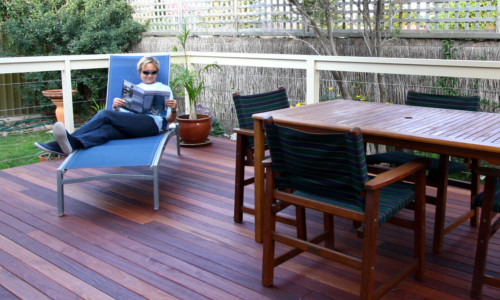
Timber is surprisingly good medicine. Spending time within any timber structure — decks, pergolas and patios, especially — offers the same health benefits as when enjoying the great outdoors. And this is not some tall tale; it’s been actually scientifically proven in medical and psychological studies as well as in industry reports.
It all has to do with controlling stress. Spending time relaxing on a timber deck or chilling out in a pergola reduces stress and anxiety levels, regulates blood pressure and increases levels of happiness and satisfaction. Reduce your stress levels and you also reduce the risk of being afflicted by stress-related maladies such as hypertension, heart disease, diabetes and asthma.
Of course you can probably experience some level of stress reduction while putting your feet up on a steel, concrete or composite deck, but we haven’t come across actual studies that prove this. So we will attribute this to the fact that these non-timber structures bring you closer to the outdoors and allow you to relax amidst nature.
Timber Is Tough And Durable
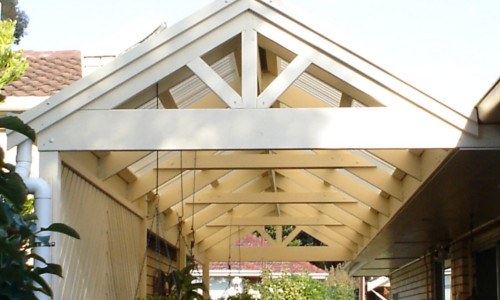
Timber is surprisingly tough and when treated holds its own against concrete and steel in terms of structural efficiency for carried load per unit. Of course it also depends on what timber species you are referring to as different varieties of timber have varying degrees of toughness and durability. Each type of timber is assessed a Hazard Level rating that indicates how suitable it is for certain applications. Other methods for classifying timber include Stress Grading, Visual Stress Grading, Strength Grading and Machine Grading.
Advances in understanding the structure of individual timber species and breakthroughs in timber treatment technology have pushed the envelope significantly for this highly versatile material. Engineered timber is being used to build taller and bigger buildings around the world — the Tall Wood Residence in the Canada’s University of British Columbia, The Tree in Norway, The Cube in London, England and the 10-storey Forte apartment building in Melbourne. Plans are underway for more ambitious and more creative timber structures, a testament to the material’s toughness and durability.
Timber Is Beautiful
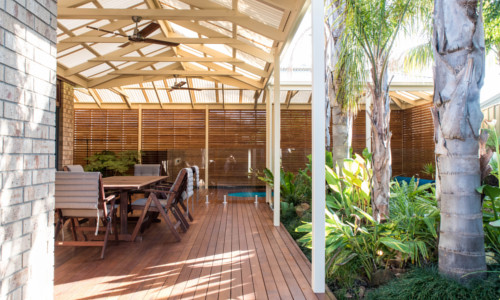
Everything else considered, there is one aspect where timber outshines concrete, steel, composites and other building materials. In terms of sheer visual and tactile appeal, none of these alternative options come close.
Let’s start with colour; natural timber colours range from subtle creams to deep, dark luscious browns. But then you combine these colours with timber’s natural lines and textures, including the imperfections, and you have a material that is delightful, at the very least.
Build With Timber
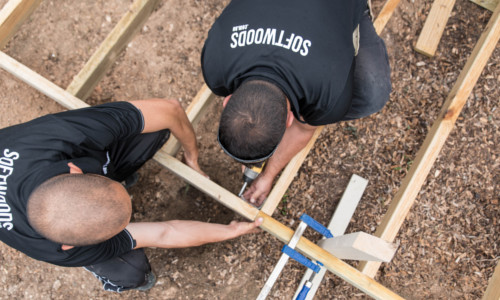
As we have pointed out above, timber naturally balances its natural beauty with strength, sustainability and environmental friendliness and makes a very compelling argument as the material of choice for building your patio, deck and pergola as well as any other outdoor living extensions for your home.

